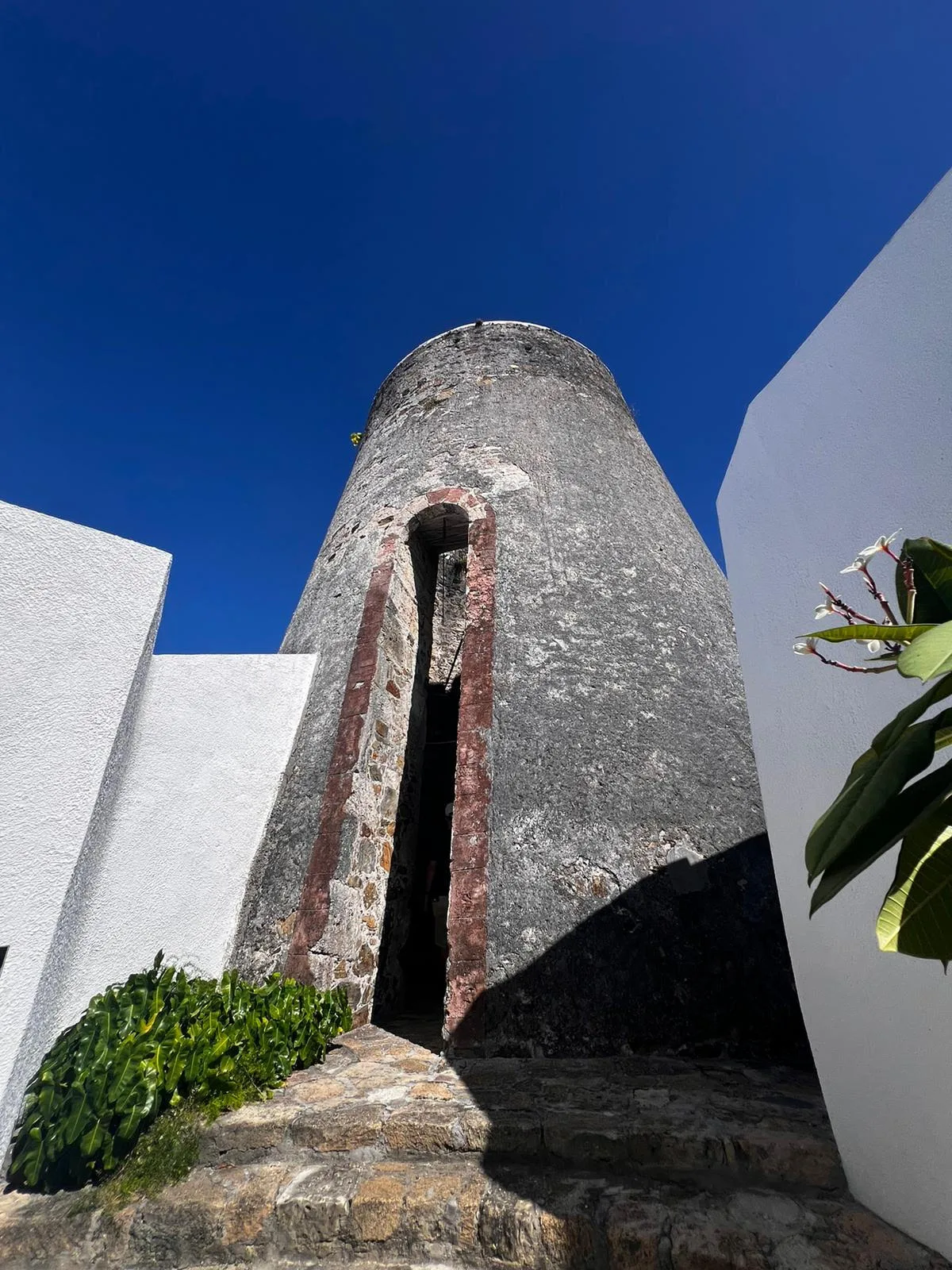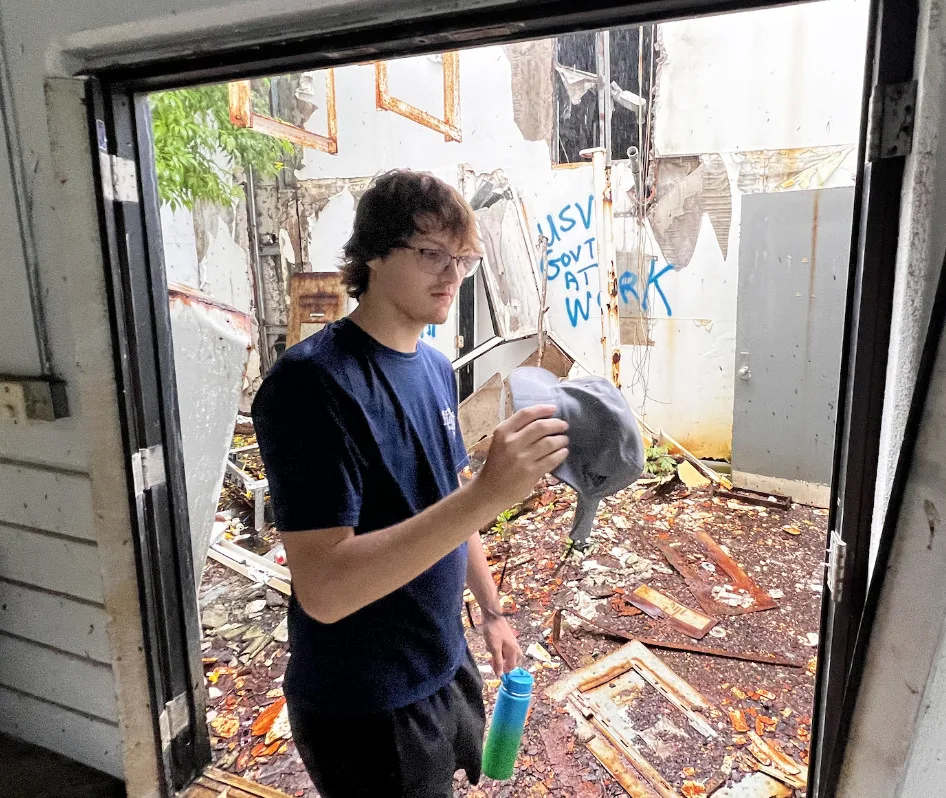Programs Blog
Conservation and Restoration as Reparations

October 16th, 2024
Location: Feather Leaf Inn, St Croix, USVI
Weather: Imagine a humidifier on top of a running oven in a studio apartment. Now add bugs.
The Feather Leaf Inn sits perched atop a hill overlooking Butler Bay in St. Croix. Boasting one of the most complete colonial histories of a plantation estate I’ve encountered during my time here, owners Ryan and Corina have done great work archiving their property’s tenure of tragedy. Serving as agricultural land, a sugarcane mill, and a rum distillery, the estate produced what would be worth millions of Danish kroner during its lifetime. Every step of this process relied on the labor of enslaved peoples, who were reduced to vessels of production of capital, much like the land they toiled. Most of the land on the island was burned, slashed, and generally desecrated in favor of the production of sugarcane. These ecological and humanitarian apocalypses were long protected by Danish law, earmarking a torturous anthropogenic timespan wherein the ruling class had exactly one goal. MONEY!
The actions of the Danish and other colonial powers left the land mostly a monoculture, which became overgrown with invasive species over time. The emphasis on production of capital left St. Croix and other Caribbean islands ecologically much less interesting than they would have been sans plantation complex. The Feather Leaf Inn assumed the undertaking of propagating native and historically important trees, a step that property owners in postcolonial lands should consider as a top priority. Doing so honors the story of the oceanic interchange that shaped our tropical islands, while simultaneously beautifying them.
Conservation is a direct rebuke to extractive anthropogenic pressures aimed at production of capital. Paradoxically, conservation requires financial assistance to work. Today, we went out for a rainy hike with Professor Olasee Davis, Crucian environmentalist and historian. Surmounting the great peak of Maroon Ridge, we overlooked the swathes of land he’d recently advised for NOAA conservatory status. Maroon Ridge was a final resting place and clandestine refuge for Crucian runaways fleeing punitive Danish slave codes. The cost of protecting the sacred coastline totaled $75 million dollars in land acquisitions, thanks to federal stimulus.
Leandro Nuckols, Grinnell College

Recent Posts from the Ships
- Ocean Classroom 2024-A collaborative high school program with Proctor Academy
- Collaborations and Long-term Commitments: SEA’s Caribbean Reef Program Sets a Course for Coastal Programs that Compliment Shipboard Experiences.
- Sea Education Association students prepare for life underway using state of the art nautical simulation from Wartsila Corporation.
- SEA Writer 2022, Magazines From the Summer SEA Quest Students
- Technology@SEA: Upgrades Allow Insight into Ocean Depths
Programs
- Gap Year
- Ocean Exploration
- High School
- Science at SEA
- SEA Expedition
- SEAScape
- Pre-College
- Proctor Ocean Classroom
- Protecting the Phoenix Islands
- SPICE
- Stanford@SEA
- Undergraduate
- Climate and Society
- Climate Change and Coastal Resilience
- Coral Reef Conservation
- Marine Biodiversity and Conservation
- MBL
- Ocean Exploration: Plastics
- Ocean Policy: Marine Protected Areas
- Oceans and Climate
- Pacific Reef Expedition
- The Global Ocean: Hawai'i
- The Global Ocean: New Zealand